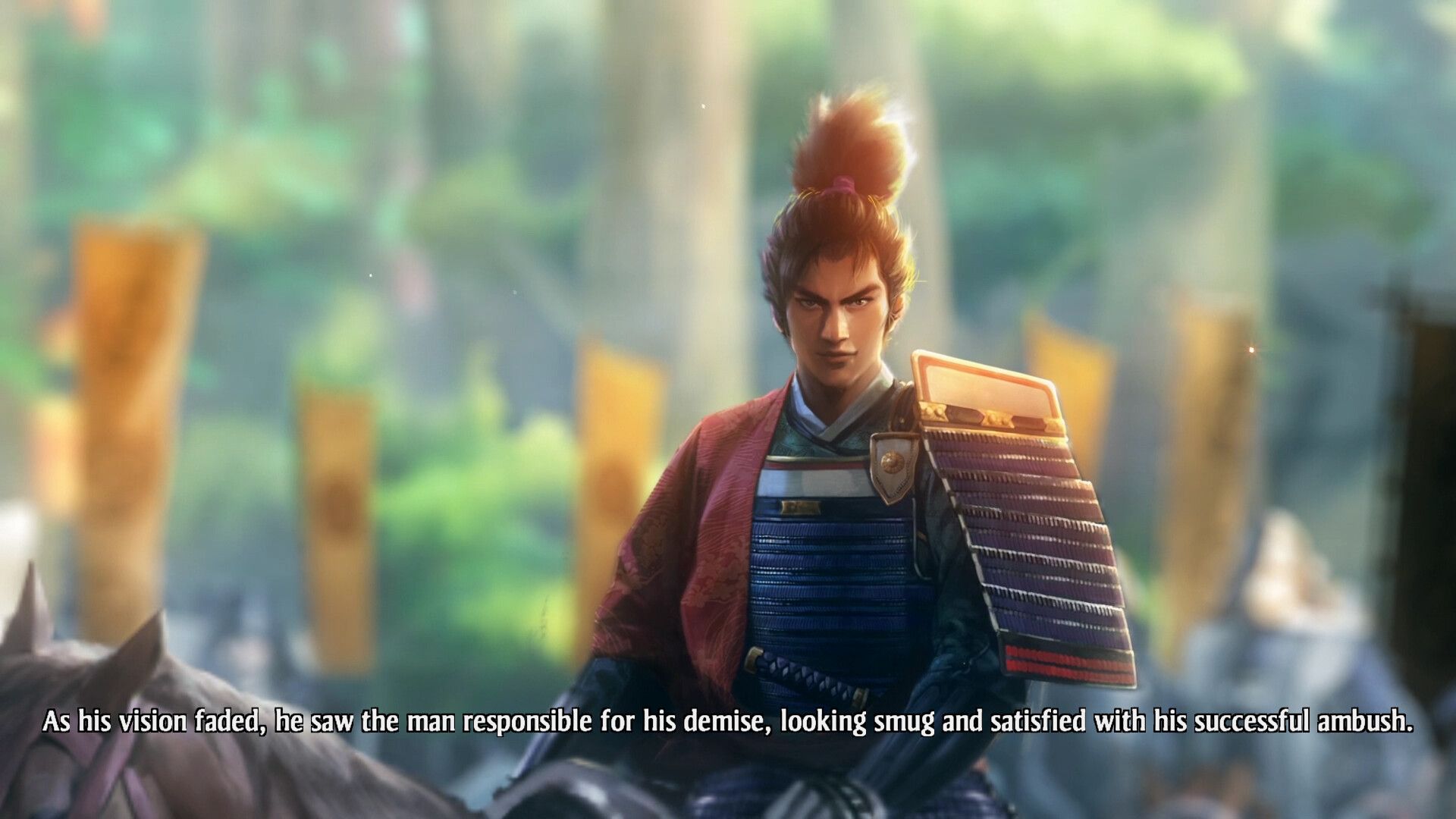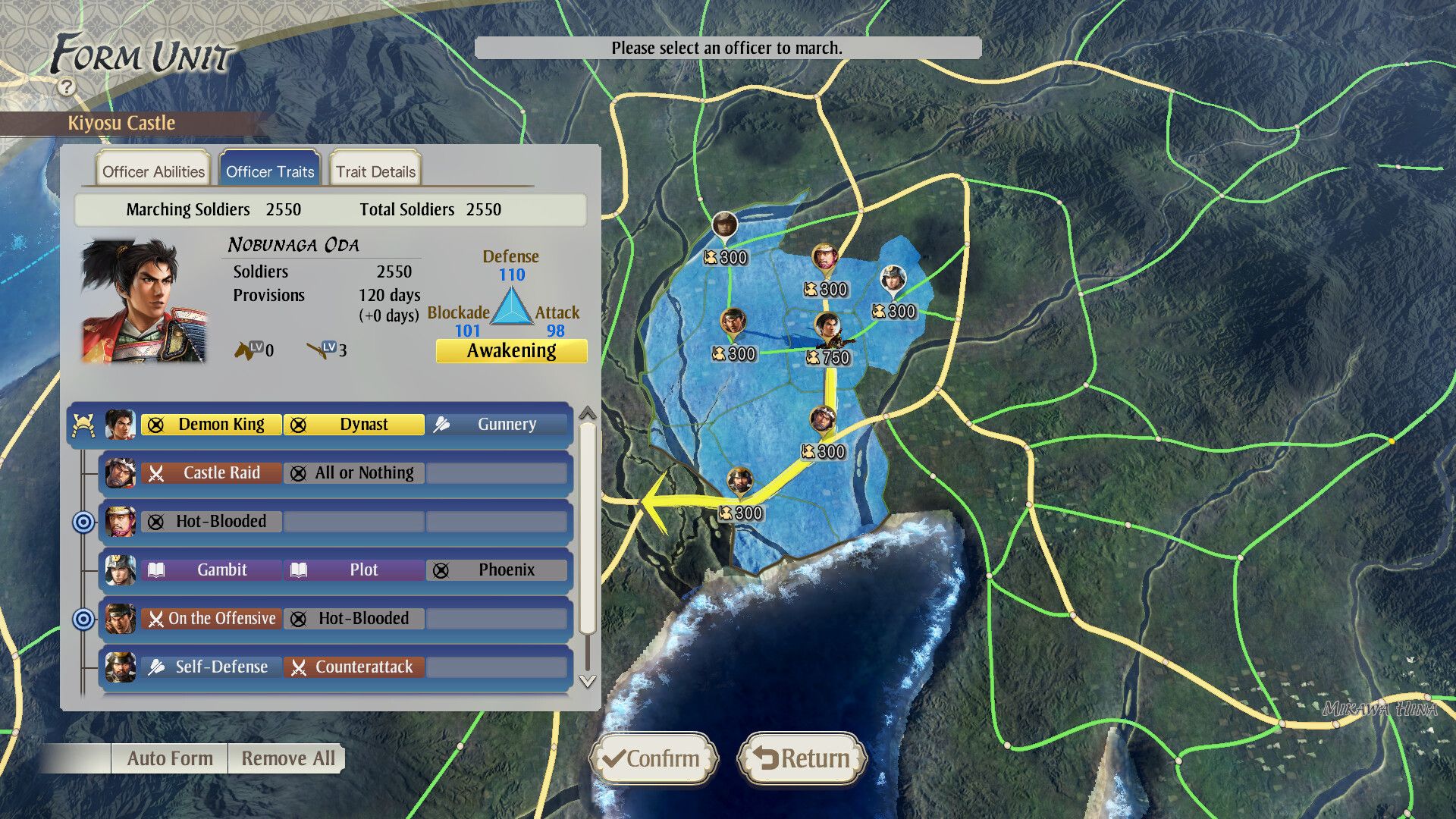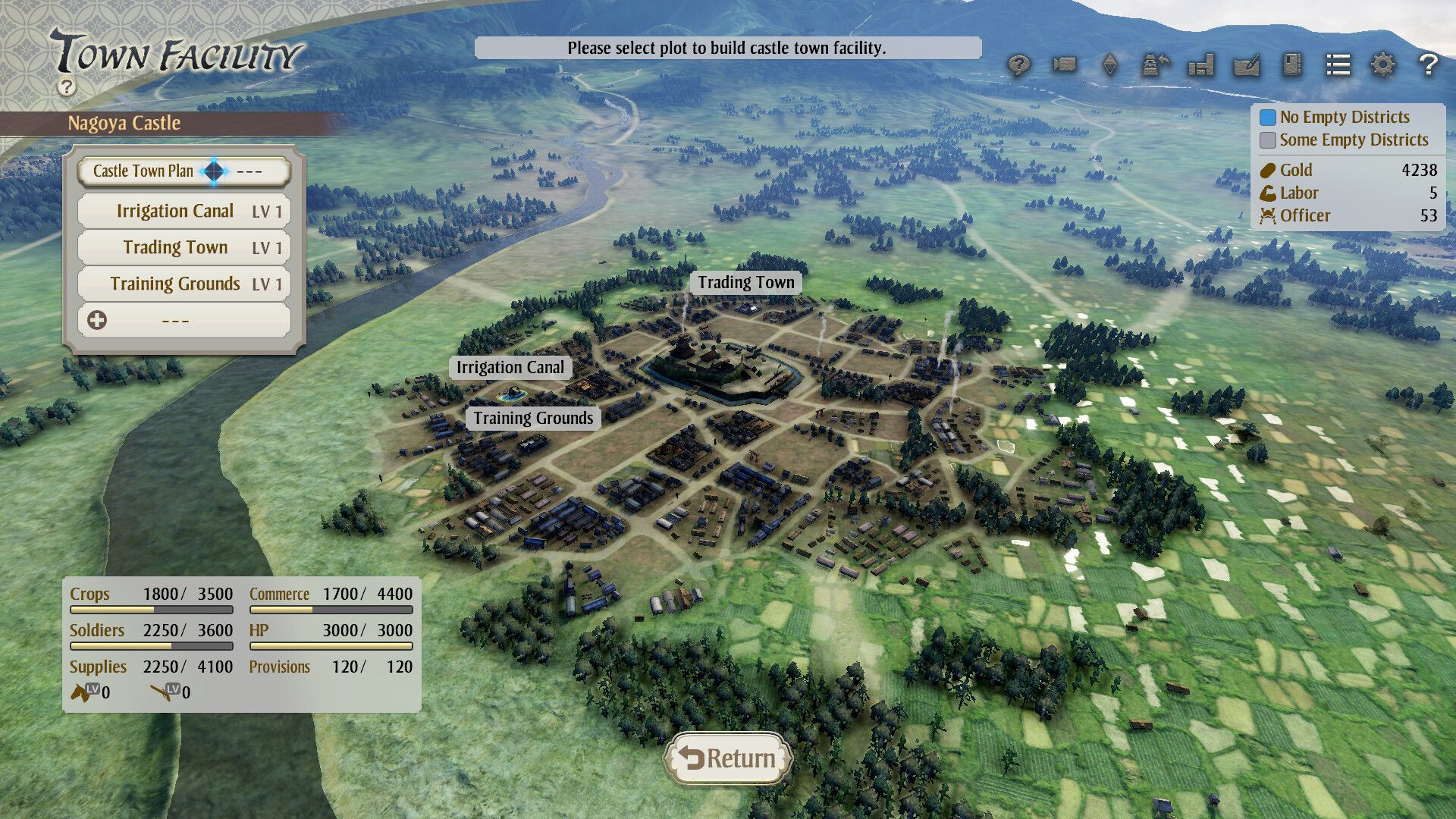
Strategy games on consoles tend to be a strange niche. While the genre is often dominated by turn-based tactics games, owing largely to the imprecise control scheme offered by controllers, real-time strategy games leaving their PC homes tend to need to come up with some unique hooks, be it with unique control schemes or a different take on core gameplay than their contemporaries.
These games have to do this in order to not only attract a player base that would be unfamiliar with the genre, but also keep the game playable despite the lack of precise input through mouse and keyboard. Nobunaga’s Ambition: Awakening takes a unique approach to its hooks, not by doing anything radical with its control scheme, but instead focusing almost entirely on parts that many strategy games tend to either avoid or only grudgingly attempt in a half-hearted manner.
Nobunaga’s Ambition: Awakening is a grand strategy game that largely revolves around the Sengoku period of Japanese history, which revolved around the rise of several clans that would try and take over the ultimate seat of power and unite the country. As its name might imply, the game uses Oda Nobunaga as its primary protagonist, and while several other clans are also playable, Nobunaga is the focus of this particular title.

"As its name might imply, the game uses Oda Nobunaga as its primary protagonist"
Despite being a long-running franchise that dates back to the 1980s, you won’t really find yourself being particularly lost in the story, since every game essentially acts as a great retelling of the entire time period. And while comparisons with something like Total War: Shogun 2 might seem obvious, Nobunaga’s Ambition: Awakening doesn’t have nearly as large of a focus on the minute-to-minute gameplay of strategic battles. Rather, the game takes a much wider look at the entire setting and situation, and feels more like a management sim in many ways.
The story’s quite simple, especially if you’re a history buff. The Sengoku period—sometimes referred to as the Warring States period—has been kicked off, and several daimyos from across Japan have decided to try and make a play for the seat of the Ashikaga Shogunate. Players will pick a starting point divided into several different years, spanning decades, as well as a daimyo to play as. From that point on, events in the game essentially play out like they did in real life, aside from the fact that the player has a lot of influence over what can happen and when. Aside from players’ own choices, Nobunaga’s Ambition: Awakening also has historic battles that depict major battles from real-life history that players can take part in, complete with historically-accurate situations and objectives.
The bulk of the gameplay in Nobunaga’s Ambition: Awakening takes part off the battlefield, however, and players will find themselves managing various castles and territories, as well as sort out the logistics of not only their armies, but also their officers and their various career tracks. For example, daimyos have to assign a person to supervise the construction of any new buildings in their territories, and the supervisor has their own stats and traits that can affect the construction. Someone particularly good at accounting can manage to make that irrigation canal you wanted to build cheaper, while a charismatic leader can encourage builders to work faster, completing that garrison building in less time than it would have taken under anyone else.

"The bulk of the gameplay in Nobunaga’s Ambition: Awakening takes part off the battlefield"
There are several nuances to deal with in the management aspect of Nobunaga’s Ambition: Awakening, and the layers go quite deep, from stats and traits, to morale, to even just trying to keep your economy afloat during a tumultuous war. Morale, for example, can be affected by giving out promotions to soldiers that others might not see as deserving of their new post. On the other hand, a decorated soldier getting a promotion does quite a bit to boost up your morale, which in turn can have cascading effects throughout your castles and territories.
When it comes to some of the larger-scope administration of your clan’s territories, there are quite a few paths to go down, from edicts to pass to technologies to research. All of this, of course, feeds into the game’s battle system, which is quite unique in its own right.
Battles in Nobunaga’s Ambition: Awakening are obviously real-time, but rather than giving you free control of your units, you are instead presented a much wider view of the entire battle. Rather than individually controlling archers and spearmen, for example, you’re instead going to be controlling entire regiments. Movement and combat take place across specific nodes and lines that can be traveled through, and once two regiments clash, it essentially becomes a game of watching numbers go up and down. This isn’t to say that there isn’t any real strategy involved, of course. Your daimyo and soldiers have special abilities that can be triggered in the right circumstances, and you can even pull off some fancy combat maneuvers like a pincer attack with the correct movement and use of your armies.

"Rather than individually controlling archers and spearmen, for example, you’re instead going to be controlling entire regiments."
Make no mistake, however. While combat is an important aspect in Nobunaga’s Ambition: Awakening, that isn’t where the core of the game lies. Compared to just about everything else in the game, the combat is the most simplistic aspect. Instead, you’ll be focusing almost entirely on being a good clan leader, making sure your armies are adequately supplied, and the villagers under your care aren’t starving. This core concept is so important that a lot of the earlier buildings do little more than just straight up giving you more money, or giving you more food.
What makes Nobunaga’s Ambition: Awakening even more interesting is its presentation. While the story is based very much on real-world history, with historical figures being present just about everywhere you look, the game’s presentation is more like that of a shonen-style anime. The first time you start up the game, rather than feeling like you’re going to be in for a grim war game where thousands of soldiers are going to lose their lives, the opening cinematic instead feels like you’re about to set off on a grand adventure with the goal of uniting the nation of Japan.
Nobunaga’s Ambition: Awakening is definitely one of the more unique games out there, especially when taking console releases into account. While PC players have access to plenty of strategy games that focus more on economic aspects rather than the battles, Nobunaga’s Ambition: Awakening can quite easily act like those player’s first step into the genre. The only real downside to the whole game is the lack of solid tutorials. Rather than introducing mechanics through well-constructed scenarios, the game instead expects you to just jump into a new campaign and try pushing buttons. Occasionally, you’ll be presented with a big box of text (sometimes even with several pages), that might contain the details you need to figure something out, but honestly, that’s a terrible way to teach someone how to play the game.

"The only real downside to the whole game is the lack of solid tutorials."
Players might end up feeling more comfortable jumping into the game after watching a couple of videos or reading a few guides online, and might just be better off disabling the tutorials entirely and learning by doing. The worst that can happen is that you lose a campaign, but thankfully, a fresh new campaign is just a key press away, and Nobunaga’s Ambition: Awakening offers plenty of variation in its campaigns by offering quite a few daimyos as well as time periods to choose from.
Ultimately, Nobunaga’s Ambition: Awakening is an interesting take on the strategy genre, choosing to focus more on the administration aspects of running a successful war campaign rather than focusing on the battles themselves. And while learning the game might be quite a bit of a challenge in the beginning, there’s a lot of fun to be had, as well as quite a bit of history to be learned.
The PlayStation 4 version of this game was reviewed on PlayStation 5 via backward compatibility.
Unique gameplay; Simple but strategic battles; In-depth economic and political management.
Really bad at teaching new players how to play.
















